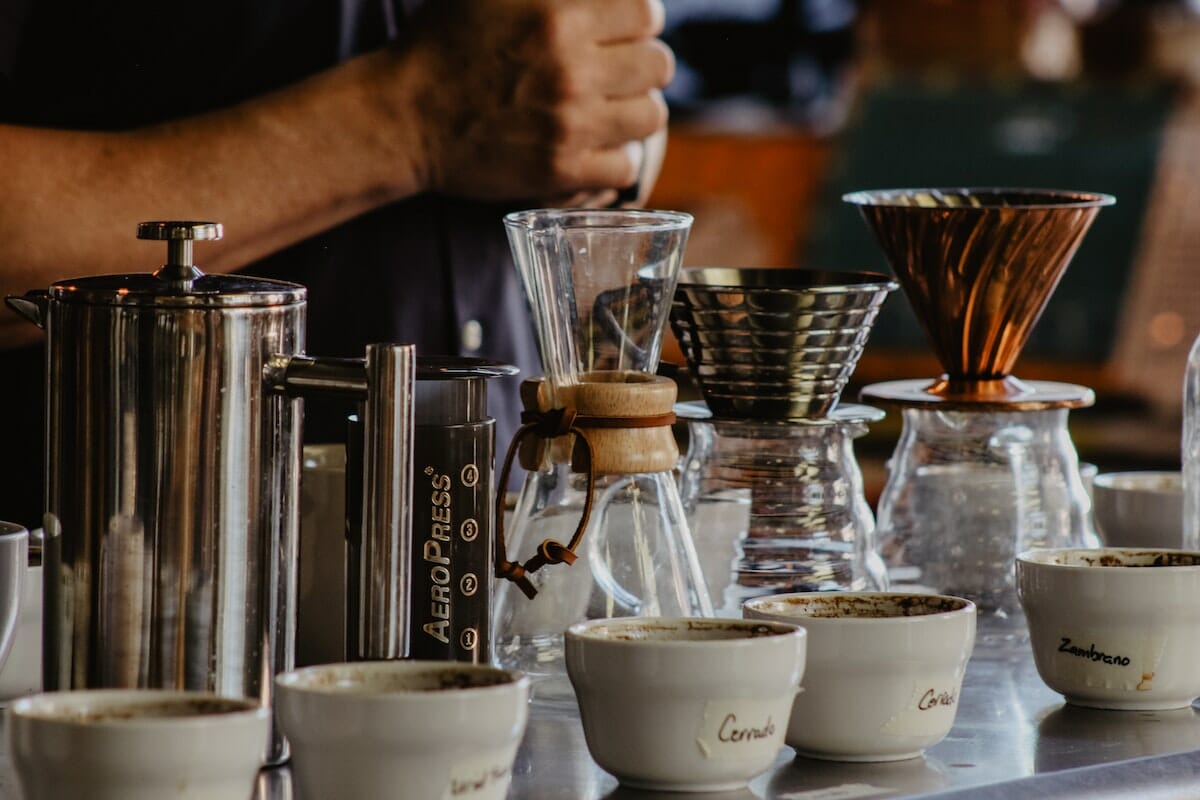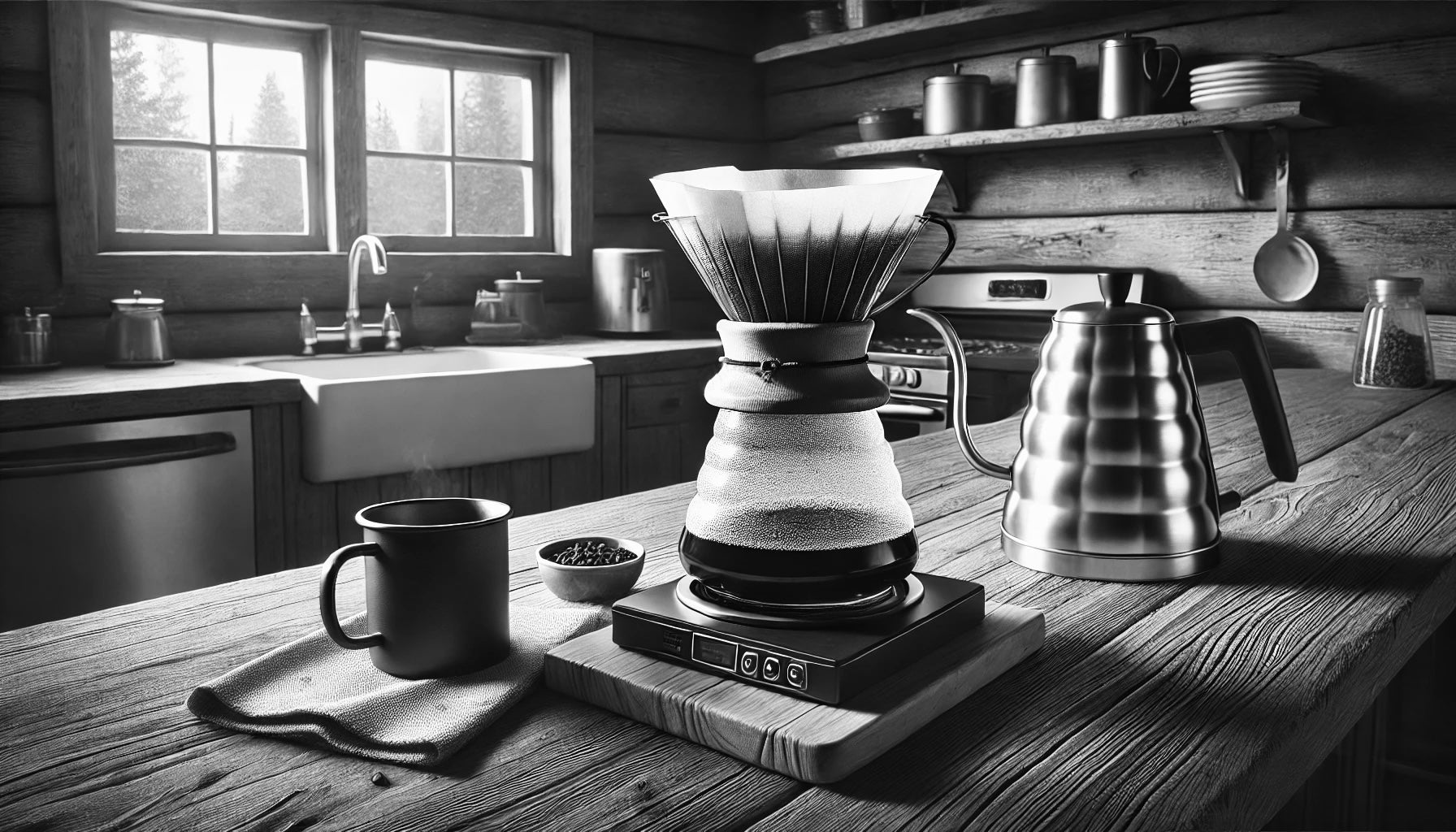Mastering Coffee Brewing Methods: Vital Methods for every single Coffee Lover
Mastering Coffee Brewing Methods: Vital Methods for every single Coffee Lover
Blog Article
The Scientific Research Behind Coffee Developing: Exactly How Temperature Level and Time Affect Your Drink
Understanding the science behind coffee developing reveals that temperature level and time are not mere variables yet essential elements that determine the beverage's taste account and total quality. As we explore the subtleties of these aspects, the inquiry emerges: just how can one effectively equilibrium temperature and time to attain that excellent mixture?
The Chemistry of Coffee Removal
The chemistry of coffee removal looks into the detailed processes that change raw coffee beans into the fragrant drink delighted in worldwide. This transformation largely involves the solubility of different compounds present in the beans, which are influenced by factors such as work dimension, water high quality, and the developing approach used.
Throughout the brewing procedure, hot water works as a solvent, drawing out soluble substances, including high levels of caffeine, lipids, sugars, and acids, from the coffee premises. Each compound adds to the flavor account, scent, and body of the final beverage. As an example, acids are liable for bright and appetizing notes, while oils add to an abundant mouthfeel.
The removal process is not uniform; different substances liquify at different prices. The initial stages of developing extract acids and sugars, causing a positive acidity, while long term removal can lead to resentment because of over-extraction of unfavorable compounds. Comprehending these chemical communications is vital for maximizing developing techniques, as the equilibrium between extraction time and water temperature level can considerably affect the total quality of the coffee. Inevitably, grasping the chemistry of coffee removal is vital to accomplishing a tasty and all-round cup.
Perfect Brewing Temperatures
Finding the right developing temperature level is crucial for unlocking the complete possibility of coffee flavors and scents - coffee brewing methods. Research shows that the optimum array for brewing coffee exists between 195 ° F to 205 ° F(90 ° C to 96 ° C) Within this variety, the removal process properly dissolves the desirable soluble substances in coffee beans, causing a tasty and well balanced mug
Developing at reduced temperatures, such as listed below 195 ° F(90 ° C ), might lead to under-extraction, yielding an acidic and weak mixture with soft flavors. On the other hand, developing at temperature levels going beyond 205 ° F(96 ° C) can result in over-extraction, producing a harsh and bitter preference because of the too much dissolution of unwanted substances, such as tannins.
In addition, the perfect brewing temperature level can vary depending upon the coffee bean type and roast degree. Lighter roasts frequently profit from slightly higher temperature levels to improve their intricate flavor accounts, while darker roasts may be better matched to reduced temperatures to minimize resentment.
Eventually, maintaining precision in brewing temperature levels is crucial for attaining an unified equilibrium of tastes, ensuring that every mug of coffee supplies a satisfying sensory experience.
Impact of Developing Time
Developing time plays a pivotal function in figuring out the taste account and general high quality of coffee. Shorter developing times can result in under-extraction, leading to a sour or weak taste, as not sufficient soluble compounds are dissolved.
Optimum brewing time varies depending upon the technique made use of and the work dimension of the coffee. For circumstances, a French press usually needs regarding four mins, while coffee removal is normally completed within 25 to 30 seconds. It is important to calibrate developing time in conjunction with various other variables, such as water temperature and coffee-to-water proportion, to attain the preferred flavor account.
Comprehending the influence of brewing time makes it possible for coffee fanatics to refine their brewing methods, eventually improving the sensory experience of their cup (coffee brewing methods). With cautious attention to this variable, one can open the complete possibility of the coffee, revealing its unique characteristics and subtleties
Developing Techniques and Their Results

For example, methods like French press and cold mixture enable for a longer steeping time, leading to a fuller body and durable flavor as a result of raised extraction of oils and soluble solids. Alternatively, espresso brewing uses high pressure and a much shorter removal time, generating a focused shot that emphasizes intense tastes and a rich crema.
Pour-over strategies, such as Chemex or V60, offer an even more controlled extraction process, permitting the brewer to adjust flow rate and water distribution, which can boost illumination and quality. Percolation techniques cycle water click over here via the coffee premises multiple times, leading to a more powerful, usually bitter flavor.
Last but not least, the usage of paper filters versus metal filters can additionally affect the last taste; paper filters normally generate a cleaner cup by trapping weblink oils and fine bits, while metal filters allow more oils to travel through, adding to a fuller mouthfeel - coffee brewing methods. Comprehending these nuances can raise the coffee experience considerably
Tips for Improving Your Mixture
A well-executed brew can change even the easiest coffee into an impressive experience. To attain this, interest to detail is necessary. Begin with high-grade, fresh baked beans, as their flavor profile diminishes with time. Grind the beans right before making to maximize quality, making sure the grind size matches your developing approach-- coarser for French press and finer for coffee.
Water top quality plays a vital duty; use filteringed system water devoid of contaminations. The excellent developing temperature level varies in between 195 ° F and 205 ° F(90 ° C to 96 ° C ) As well hot can blister the coffee, while too great may under-extract flavors.
Timing is just as crucial. For immersion techniques, steeping for 3 to five mins is optimal, whereas drip approaches usually take about 5 mins. Explore mixture times to find your favored strength.

Verdict
In summary, the elaborate partnership in between temperature and time is extremely important in the coffee developing procedure. Comprehending these clinical principles empowers people to fine-tune their developing techniques, ultimately leading to a much more balanced and enjoyable coffee experience.
Recognizing the science behind coffee developing reveals that temperature and time are not simple variables but critical components that dictate the beverage's taste account and total high quality. Comprehending these chemical interactions is essential for enhancing brewing methods, as the equilibrium in between extraction time and water temperature can dramatically affect the general quality of the coffee.Brewing time plays a critical function in figuring out the flavor account and general top quality of coffee. By concentrating on these elements-- bean high quality, grind dimension, water temperature level, soaking time, and ratio-- you can raise your coffee developing procedure, resulting in a constantly remarkable cup.
In summary, the detailed relationship in between temperature level and time is critical in the coffee developing procedure.
Report this page